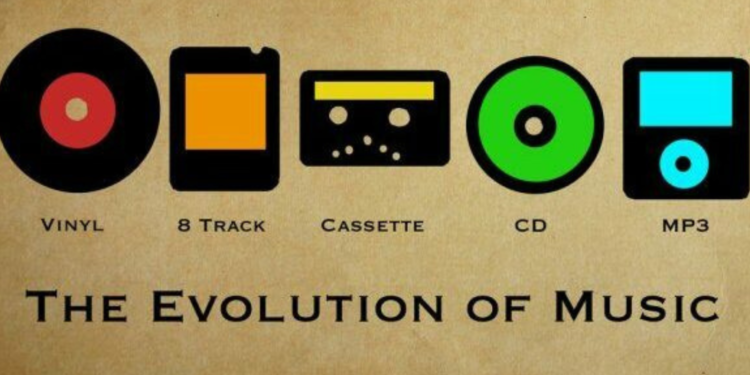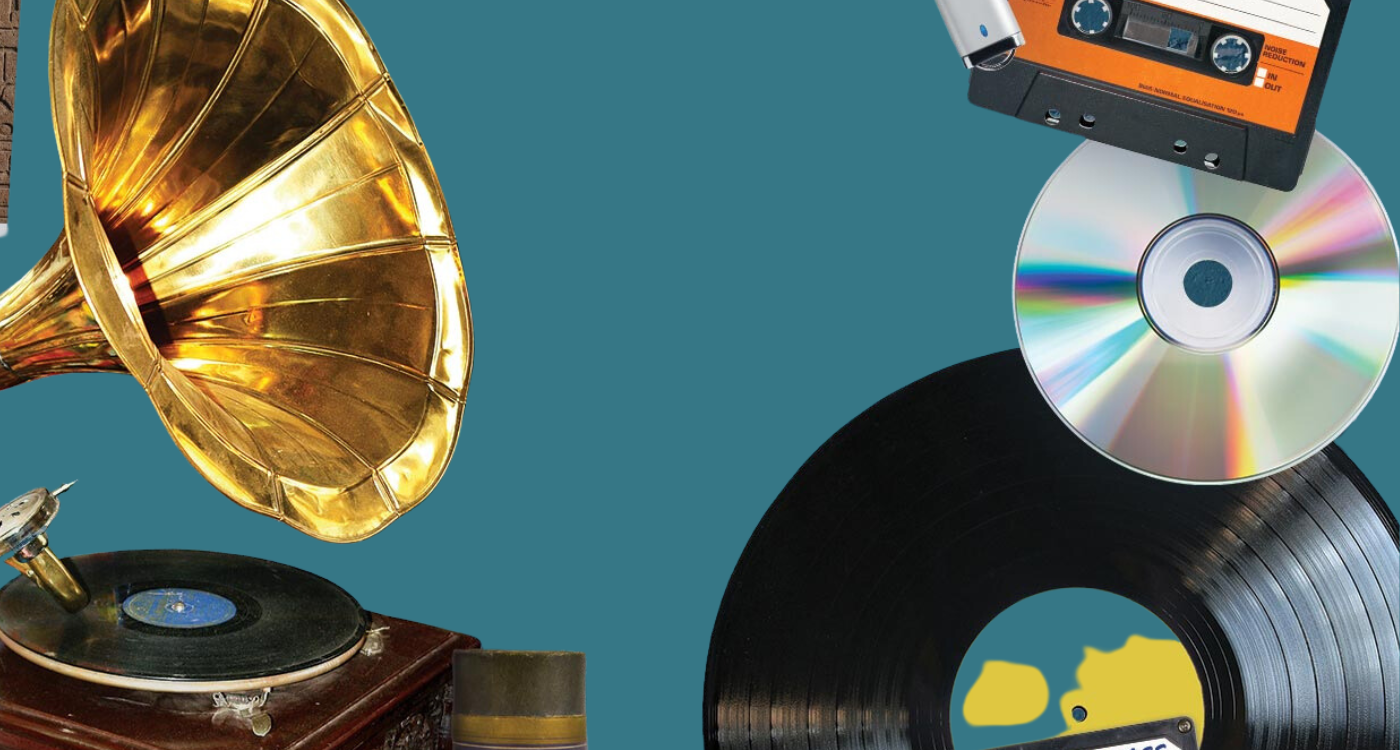This journey through time is just the beginning of a mesmerizing musical expedition, from the beautiful invention of the phonograph to the booming digital musical revolution and the mesmerizing rise of AI-generated songs. Music has always been important in our lives. It can help us heal, express ourselves, and connect with others. it has been used to help people with physical and mental disabilities, Mental Health, and it plays a central role in our emotions and experiences. Over the years, music has evolved into many different styles, from classical music to contemporary music. These styles can overlap and influence each other.
The way music is made has changed dramatically during the previous three decades. Both social media and internal played a vital role in the transformation of music. They have made it easier for musicians to share their music with the world, and they have also led to new ways of discovering and listening to music. Music is constantly evolving, as musicians learn from each other and experiment with new sounds and ideas.
The Significance Of Music Technology
Music technology has played a pivotal role in the evolution of music, transforming the way we create, record, distribute, and consume it. From the invention of the phonograph in the late 19th century to the rise of digital music streaming platforms and AI-generated music in the 21st century, technological advancements have had a profound impact on the music industry and culture.
Democratization of Music Creation: Music technology has made it easier and more affordable for people to create and produce music, regardless of their skill level or budget. In the past, only those with access to expensive recording studios and equipment could create high-quality music. Today, anyone with a computer and a basic audio interface can create and produce professional-sounding music.
Increased Access to Music: Music technology has made it easier and more convenient for people to access and listen to music from all over the world. In the past, people had to rely on radio stations or physical media, such as records and CDs, to listen to music. Today, people can stream millions of songs on demand through digital music streaming platforms.
New Genres and Styles of Music: Music technology has enabled musicians to experiment with new sounds and textures, and to create new genres and styles of music. For example, the invention of the synthesizer in the 1970s led to the development of electronic music genres such as techno, house, and hip-hop.
New Ways to Consume Music: Music technology has introduced new ways to consume music, such as streaming, downloading, and creating custom playlists. This has given people more control over how they listen to music and has made it easier to discover new artists and genres.
Overall, music technology has had a transformative impact on the music industry and culture. It has made it easier for people to create, record, distribute, and consume music, and it has also led to the development of new genres and styles of music. Music technology is also being used to enhance music education, performance, and therapy.
First, we met with Harshwardhan Singh Negi, an accomplished independent music composer, and producer from Lucknow, Uttar Pradesh, with eight years of experience, has made a mark in the music industry. He is a singer, composer, guitarist, and producer, known for his dedication to crafting emotionally resonant melodies. Harshwardhan is a vital part of the musical collective “Shadaj,” performing at renowned festivals and gaining insights into stage etiquette and teamwork.
As a composer and producer, he infuses his work with a unique touch, blending contemporary innovation with timeless traditions. Beyond his music career, Harshwardhan educates aspiring musicians through workshops, nurturing their talents and passion. His multifaceted contributions enrich the musical landscape.
Next, we connected with Aditya Pratap Singh, who boasts over five years of experience in the independent music industry. Aditya has worn many hats, from serving as a bass player for Lucknow-based band “Escape Artist” to working in technical roles at festivals such as Lollapalooza 2023 and Mahindra Sanatkada Festival Lucknow 2023. Currently, he holds the position of Client Service Manager at Horus Music Limited, a premium music distribution company. Both Harshwardhan and Aditya bring their unique talents and experiences to the dynamic world of music, enriching the industry and contributing to its vibrant tapestry.
Overview of The Evolution of Music Technology

Our journey begins in the late 19th century when Thomas Edison invented a machine that changed the way of listening the music by inventing Phonography. The phonograph could record and reproduce sound, which meant that people could now listen to their favorite music whenever and wherever they wanted. It was a huge success but it has some limitations it is not easy to transport and the sound quality was not always good. As time moved forward towards the 20th-century Vinyl records were introduced with a new format for music and playback emerged it was better than photography in such a way that it was portable and gives better sound quality because of which it became the most popular format of listening.
But the evolution didn’t stop there. Advancements in tape recording technology ushered in a new era. Magnetic tape allowed for more extensive recording, editing, and manipulation of music. It gave birth to a wave of innovative sound production, opening doors to creativity that had previously been unimaginable. After that in the 1920s radio broadcasting made its debut and it quilt became a popular way to listen to music. It played a major role in the rise of music, where radio stations played the latest hits by popular artists or helped them promote their music and make them famous.
In the 1960s, a new format for music recording and playback emerged: the compact cassette. Compact cassettes were smaller and more portable than vinyl records, making them ideal for listening to music on the go. Compact cassettes also made it possible for people to create their own custom mixtapes. This helped to promote the sharing of music and the discovery of new artists. In the 1980s, a new format for music recording and playback emerged: the compact disc (CD). CDs offered superior sound quality to vinyl records and cassette tapes, and they were also more durable and easier to transport. CDs quickly became the dominant format for music listening, and they remained so for several decades.
The introduction of CDs marked a transition from analog to digital music storage. Analog music is stored in the form of physical waves, while digital music is stored in the form of numbers. Digital music storage has a number of advantages over analog storage, including better sound quality, greater durability, and easier portability. In the 1990s, a new technology revolutionized music distribution: the internet. The internet made it possible for people to download and share music files with ease. This led to a decline in the sale of physical music formats, such as CDs and vinyl records.
In the 21st century, music streaming platforms emerged, such as Spotify and Apple Music. Streaming platforms offer millions of songs on demand, and they have become the primary way that people listen to music today. The evolution of music technology has had a profound impact on the way we create, record, distribute, and consume music. It has made music more accessible and affordable, and it has led to the development of new genres and styles of music. Music technology continues to evolve, and it is likely to have an even greater impact on the music industry in the future.
Rise of online music streaming platforms
The late 20th century witnessed the dawn of a digital music revolution, and at its heart was the transformative power of the internet. Music, once bound by physical mediums, took flight in cyberspace. This paradigm shift opened doors to possibilities that were once beyond imagination.
The internet was a conduit for global music sharing, breaking down geographical barriers and connecting music enthusiasts worldwide. Online communities blossomed, creating spaces for fans to connect with their favorite artists and fellow music lovers. These digital watering holes became hubs of discourse, debate, and discovery.
Digital music file formats, particularly the ubiquitous MP3, became the new currency of the music world. Suddenly, entire libraries of songs could be compressed into digital files that could fit in the palm of your hand. Portable music players like the iPod allowed listeners to carry their entire music collections everywhere they went. The mixtape was reinvented as the playlist, and personalization became paramount.
The emergence of streaming services, though, may have caused the most change. Numerous services, including Spotify, Apple Music, and Pandora, have made music accessible to a global audience. A few screen taps can now give you access to huge song catalogs. The idea of accessing music at will replaced the idea of owning it, which sparked discussions about the worth of music in the digital age.
As the twenty-first century progresses, music technology continues to advance at an astounding rate. The majority of music is now consumed through streaming services, which also include customised playlists and recommendations that are tailored to the user’s preferences. The era of radio gave way to algorithmic curation, where listeners may now find new music thanks to AI-driven systems.
We gained valuable insights from both Harshwardhan Singh Negi and Aditya Pratap Singh regarding their experiences in the music industry, especially related to online music-sharing, streaming platforms, and the evolving role of technology.
Harshwardhan Singh Negi emphasized the transformative power of the internet when discussing unique opportunities and challenges tied to online music-sharing and streaming platforms. He highlighted how the internet has opened doors to previously unimaginable possibilities, granting access to new and diverse audiences. Harshwardhan emphasized that their music had transcended geographical boundaries thanks to online streaming and music sharing, suggesting that these platforms offer abundant opportunities that independent musicians should wholeheartedly embrace.
In regards to the future of technology in the music industry, Harshwardhan expressed a strong belief in technology’s increasing role in shaping music production. While he humorously contemplated a future where one wouldn’t need to be a traditional musician to create music, he emphasized that the essence of a good song would remain timeless, underscoring the enduring importance of musical creativity.
Shifting to Aditya Pratap Singh’s perspective, he described the experience of navigating the world of online music-sharing and streaming platforms as a learning curve for everyone. He stressed the importance of keeping up with these platforms’ evolving features and technologies to enhance music visibility. Aditya recognized that these platforms continually introduce new features for marketing and improved user experiences, making it a challenge to stay current.
Regarding the role of technology in the music industry’s future, Aditya acknowledged the remarkable development of technological capabilities that have allowed for the production of millions of songs daily. He emphasized technology’s undeniable influence on the music industry in the coming years while emphasizing that it could never replace the human element behind the creation of amazing music. Both Harshwardhan and Aditya bring valuable perspectives to the ever-evolving music landscape, emphasizing the importance of embracing technology while cherishing the enduring essence of musical creativity driven by human passion and ingenuity. Artificial intelligence and machine learning have ventured into the realm of composition and production, blurring the lines between human and machine creativity.
AI-Generated Music: The Future Beckons
AI-generated music represents a thrilling frontier in music technology. Complex algorithms, fueled by vast datasets, enable AI systems to compose music that can rival human compositions. This technology has the potential to democratize music production, granting both professionals and amateurs the power to explore uncharted sonic landscapes.
Imagine AI composing background music for films, video games, or personal projects, perfectly tailored to evoke the desired mood and emotions. AI-generated music can also serve as a collaborative partner for musicians, offering an endless wellspring of creative possibilities.
When asked about their perspective on the emergence of AI-generated music and its potential role in the future of music production, Harshwardhan Singh Negi shared insightful thoughts. They acknowledged that while AI-generated music is currently not fully mature, the tools it has introduced have significantly simplified the producer’s workflow. However, they raised concerns about its impact on the market, as it seems to reduce the demand for certain services like “mastering.” Despite the advantages AI tools bring, the composer emphasized that AI can never replace the irreplaceable element of “performance” in music.
On the other hand, Aditya Pratap Singh provided a broader perspective, emphasizing that AI-generated music can assist artists in enhancing their work but cannot replicate the creativity of the human mind. He stressed the importance of recognizing that music is deeply rooted in diverse cultures and that AI, which tends to be dominated by Western music theory, should be diversified to represent alternative music cultures. Aditya discussed his experience with AI tools, highlighting their usefulness in certain genres like Western Classical music and film scoring, which heavily rely on composition. He found AI, particularly AIVA, to be promising in these areas but noted that genres dependent on human instrumental performance had yet to fully benefit from AI integration.
These two experienced music professionals provide a comprehensive perspective on the relationship between AI and music production, showcasing the potential benefits and limitations of AI in the ever-evolving music industry. However, this technological marvel also raises profound questions. What is the role of human musicians in a world where AI can craft intricate compositions? Can AI-generated music truly replicate the depth and authenticity of human creativity, or does it merely serve as a complement? These are questions that will continue to shape the music industry and the very essence of artistry in the years to come.
Conclusion
Overall, the music industry and culture have been profoundly impacted by music technology. It has facilitated the production, distribution, and consumption of music. New musical genres and styles have also emerged as a result of it. Future developments in music technology are likely to have a more significant impact on the music business.
As we stand on the precipice of an AI-powered musical future, one thing remains abundantly clear, music technology will relentlessly push the boundaries of what is possible in the world of music. Whether you are a musician, an ardent music enthusiast, or simply curious about the future, the evolution of music technology promises a harmonious journey into the unknown, where human creativity and technological innovation dance in a mesmerizing duet, creating a symphony for the ages.






